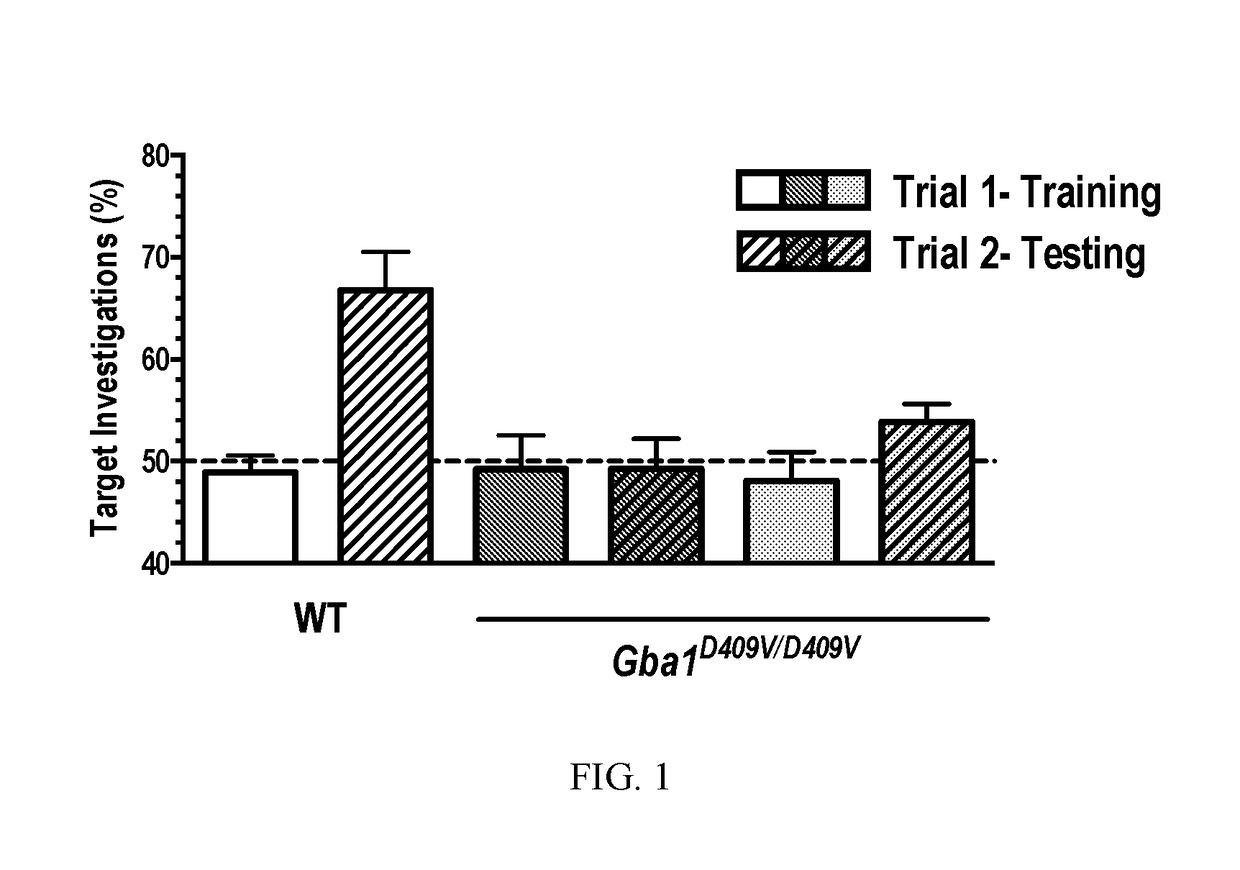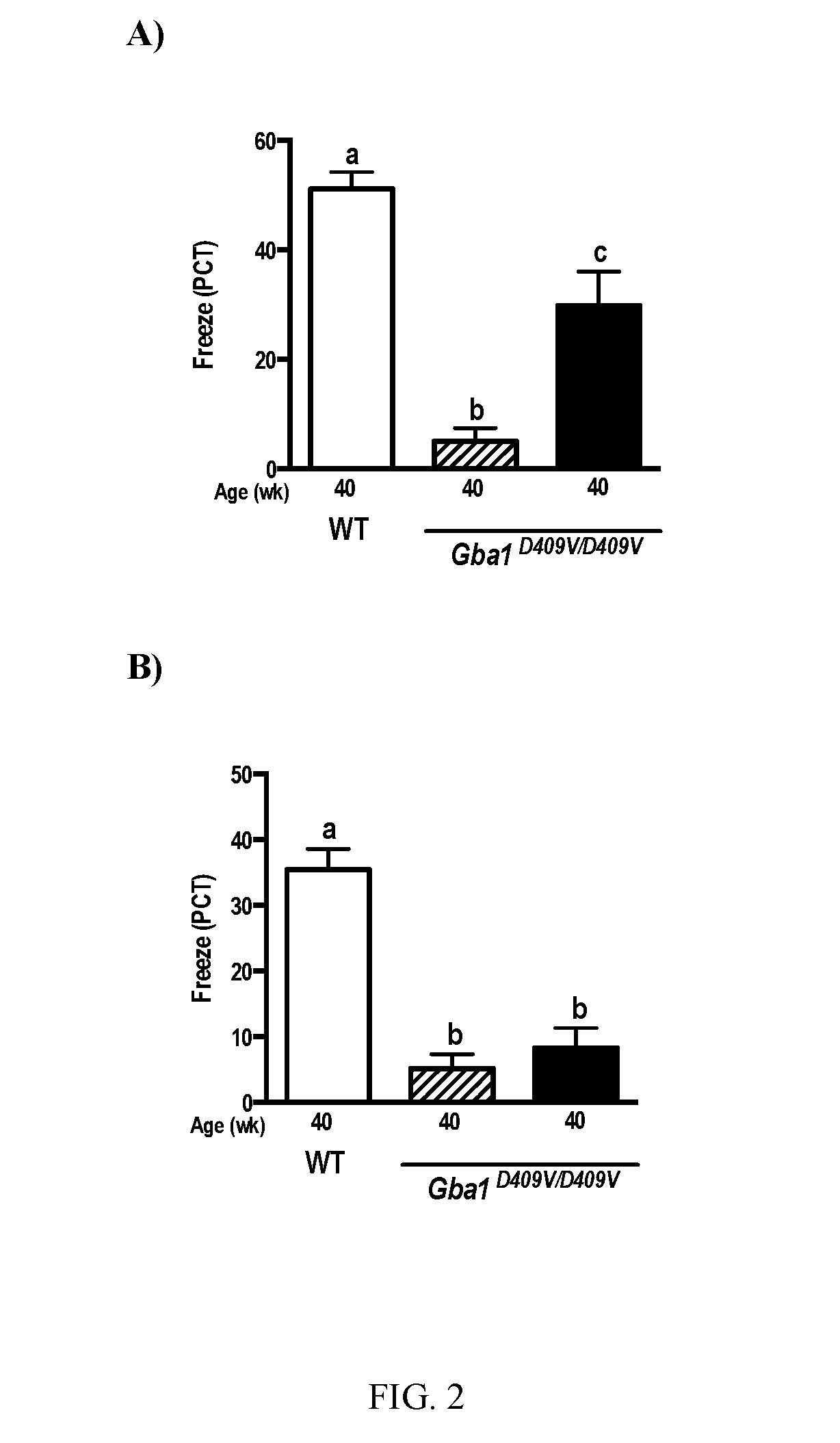Methods for treating proteinopathies
a proteinopathies and quinuclidine technology, applied in the field of proteinopathies and quinuclidine compounds, can solve the problems of protein tau accumulation, toxicity, loss of normal function, etc., and achieve the effect of preventing, reducing or reversing accumulation of protein tau-containing aggregates
- Summary
- Abstract
- Description
- Claims
- Application Information
AI Technical Summary
Benefits of technology
Problems solved by technology
Method used
Image
Examples
example 1
clo[2.2.2]oct-3-yl [2-(4′-fluorobiphenyl-3-yl)propan-2-yl]carbamate (Compound 1)
[0242]Using General Procedure C, 1-azabicyclo[2.2.2]oct-3-yl [2-(3-bromophenyl)propan-2-yl]carbamate (600 mg, 1.63 mmol), 4-fluorophenyl boronic acid (457 mg, 3.27 mmol) and palladium (II) acetate gave the title compound as a white solid (373 mg; 60%). 1H NMR (400 MHz, CDCl3) δ 7.56 (s, 1H), 7.52 (dd, J=5.4, 8.4 Hz, 2H), 7.42-7.38 (m, 3H), 7.12 (m, 2H), 5.18 (5, 1H), 4.62 (s, 1H), 2.66 (m, 6H), 1.72 (s, 6H), 2.01-0.83 (m, 5H) ppm. 13C NMR (100 MHz, CDCl3) δ 125.0, 124.0, 123.8, 116.0, 116.0, 71.3, 55.9, 55.5, 47.6, 46.7, 29.6, 25.6, 24.8, 19.8 ppm. Purity: 98.0% UPLCMS (210 nm); retention time 0.95 min; (M+1) 382.9. Anal. Calcd. for C23H27FN2O2. 0.37 (CHCl3): C, 65.86; H, 6.47; N, 6.57. Found: C, 65.85; H, 6.69; N, 6.49.
example 2
clidin-3-yl 2-(2-(4-fluorophenyl)thiazol-4-yl)propan-2-ylcarbamate (Compound 2)
[0243]To a stirred solution of 4-fluorothiobenzamide (8.94 g, 57.6 mmol) in ethanol (70 mL) was added ethyl 4-chloroacetoacetate (7.8 mL, 58 mmol). The reaction was heated at reflux for 4 hours, treated with an addition aliquot of ethyl 4-chloroacetoacetate (1.0 mL, 7.4 mmol) and refluxed for an additional 3.5 hours. The reaction was then concentrated and the residue was partitioned between ethyl acetate (200 mL) and aqueous NaHCO3 (200 mL). The organic layer was combined with a backextract of the aqueous layer (ethyl acetate, 1×75 mL), dried (Na2SO4) and concentrated. The resulting amber oil was purified by flash chromatography using a hexane / ethyl acetate gradient to afford ethyl 2-(2-(4-fluorophenyl)thiazol-4-yl)acetate as a low melting, nearly colourless solid (13.58 g, 89%).
[0244]To a stirred solution of ethyl 2-(2-(4-fluorophenyl)thiazol-4-yl)acetate (6.28 g, 23.7 mmol) in DMF (50 mL) was added sodi...
example 3
clidin-3-yl (2-(4′-(2-methoxyethoxy)-[1,1′-biphenyl]-4-yl)propan-2-yl)carbamate (Compound 3)
[0247]Using General Procedure E and the reaction inputs ethyl 2-(4-bromophenyl)-2-methylpropanoate and 4-(2-methoxyethoxy)phenylboronic acid, ethyl 2-(4′-(2-methoxyethoxy)-[1,1′-biphenyl]-4-yl)-2-methylpropanoate was prepared as an off-white solid. To a stirred solution of this compound (3.01 g, 8.78 mmol) in 1:1:1 (v / v / v) tetrahydrofuran / ethanol / water (45 mL) was added lithium hydroxide monohydrate (1.47 g, 61.4 mmol). The mixture was heated at reflux overnight and then concentrated. The residue was dissolved in water, treated with 1N hydrochloric acid (65 mL) and extracted with ethyl acetate. The combined organic layers were washed with brine, dried (Na2SO4) and concentrated to afford 2-(4′-(2-methoxyethoxy)-[1,1′-biphenyl]-4-yl)-2-methylpropanoic acid as a white solid (2.75 g, 100%). This intermediate and (S)-quinuclidin-3-ol were reacted according to General Procedure F to generate the ti...
PUM
| Property | Measurement | Unit |
|---|---|---|
| temperature | aaaaa | aaaaa |
| temperature | aaaaa | aaaaa |
| temperature | aaaaa | aaaaa |
Abstract
Description
Claims
Application Information
 Login to View More
Login to View More - R&D
- Intellectual Property
- Life Sciences
- Materials
- Tech Scout
- Unparalleled Data Quality
- Higher Quality Content
- 60% Fewer Hallucinations
Browse by: Latest US Patents, China's latest patents, Technical Efficacy Thesaurus, Application Domain, Technology Topic, Popular Technical Reports.
© 2025 PatSnap. All rights reserved.Legal|Privacy policy|Modern Slavery Act Transparency Statement|Sitemap|About US| Contact US: help@patsnap.com



